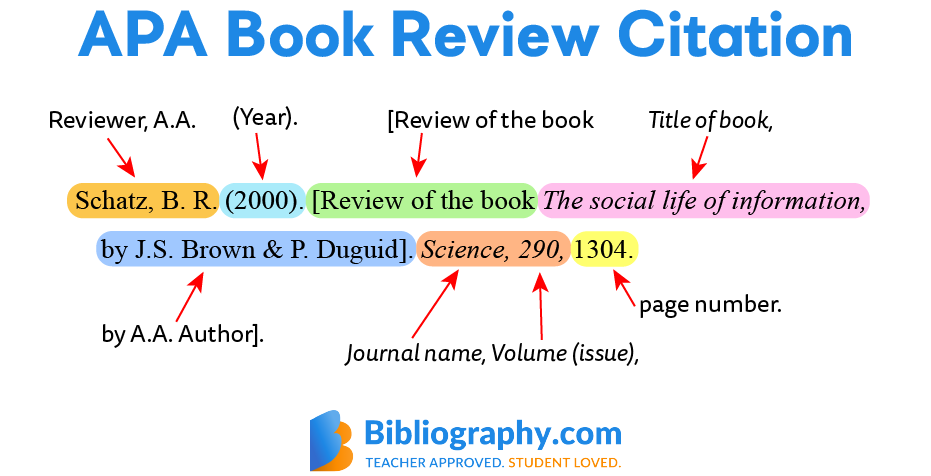In the literary world, the intersection of book reviews and proper citation practices offers a tantalizing glimpse into the realm of scholarly discourse. Readers often lament how challenging it can be to navigate the nuanced waters of referencing a book review, yet mastering this art is more than just an academic requirement—it’s a crucial skill that enlivens our relationship with literature and encourages a more profound engagement with texts.
At the outset, let’s examine what precisely constitutes a book review. A book review serves as a professional assessment of a published work, offering critiques, highlights, and an interpretation of themes and motifs. It’s not merely a summary; it’s an invitation to traverse deeper into the narrative and its implications. This evaluative commentary can be found in an array of outlets: academic journals, literary magazines, and digital platforms. Each review renders subjective yet enlightening insights that can resonate with readers and researchers alike.
When it comes to referencing a book review, particularly in academic writings that require adherence to formats like APA, MLA, or Chicago style, it’s essential to develop an understanding of the structural expectations within these different citation frameworks. Each format brings its own flair and precision, accommodating the intricate details that distinguish a book from its appraisal.
For instance, let’s take a closer look at APA (American Psychological Association) style. In APA, citing a book review requires distinct elements: the author of the review, the date of publication, the title of the review (italicized), the title of the book being reviewed, the author of the book, the place of publication, the publisher, and the DOI or URL if available. Let’s break this down.
Imagine you are citing a review of a novel by acclaimed author Chimamanda Ngozi Adichie. Your reference might look like this:
Smith, J. (2021, March 5). Review of *Half of a Yellow Sun*, by Chimamanda Ngozi Adichie. *The Literary Review*. https://example.com/review-url
This reference encapsulates the intricate relationship between the author of the review, the book being critiqued, and the details necessary to locate the source. It emphasizes how the book review contributes to the broader discourse surrounding the work itself.
Transitioning to MLA (Modern Language Association) style, the requirements necessitate a slightly different approach. In MLA, the focus is primarily on the authorship and the title of the book review. A typical citation might appear as:
Smith, John. “Review of *Half of a Yellow Sun*, by Chimamanda Ngozi Adichie.” *The Literary Review*, vol. 12, no. 3, 2021, pp. 45-47.
Again, the amalgamation of elements—author names, title, publication information—forms a cohesive structure that not only credits the reviewer but guides readers to the referenced material with utmost clarity. This is what contributes to academic integrity, fostering an environment where ideas can be shared and scrutinized without the shadows of plagiarism.
Shifting gears, the Chicago style further enriches the conversation around citing book reviews. Here, we see an emphasis on meticulousness consistent with the comprehensive nature of academic scholarship. A representative citation may be structured as follows:
Smith, John. 2021. “Review of *Half of a Yellow Sun*, by Chimamanda Ngozi Adichie.” *Review of Books*, March 3.
In Chicago style, it’s notable how the date is positioned prominently, illuminating the review’s timeliness and relevance, while ensuring readers can access the review with efficiency.
Delving further into the significance of referencing book reviews reveals a deeper fascination tethered to the relationship between the reader and reviewer. A book review is not just an isolated piece of commentary; it’s a dialogue—a conversation that spans beyond the confines of a page. Those insights shared by the reviewer echo sentiments, critiques, and praises that spark curiosity and critical thought. They often reflect cultural and social paradigms that underpin the narrative crafted by the original author.
Engaging with book reviews places readers at a unique vantage point. They can discern the convergence of differing perspectives, analyze contrasting interpretations of the same text, and cultivate an understanding far richer than what can be gleaned from an isolated reading. The art of referencing book reviews, therefore, is resoundingly significant as it fuels a cycle of inquiry and intellectual engagement.
In a world inundated with information, deciphering how to reference book reviews is not merely an academic skill; it is a pathway to authentic conversations and thoughtful discourse. By quoting and scrutinizing these reviews, scholars and casual readers alike engage in a dynamic dialogue that breathes life into both the review and the work itself.
As we expand our critical faculties and learn to navigate these citations, we open doors to deeper understandings of texts and their contexts—a journey that can be as exhilarating as the read itself. Each reference is an invitation to explore new terrains of thought and, ultimately, enrich our literary experiences. The articulation of ideas, be they affirming or dissenting, highlighted in book reviews fosters a spirit of intellectual curiosity and drives the conversation forward.
In conclusion, while the mechanics of referencing may seem daunting at first glance, it is this very process that connects us to the broader tapestry of literary culture. It empowers our voice while respecting the contributions of others, establishing a formidable foundation for ongoing discussion and reflection on the books that shape our lives.
